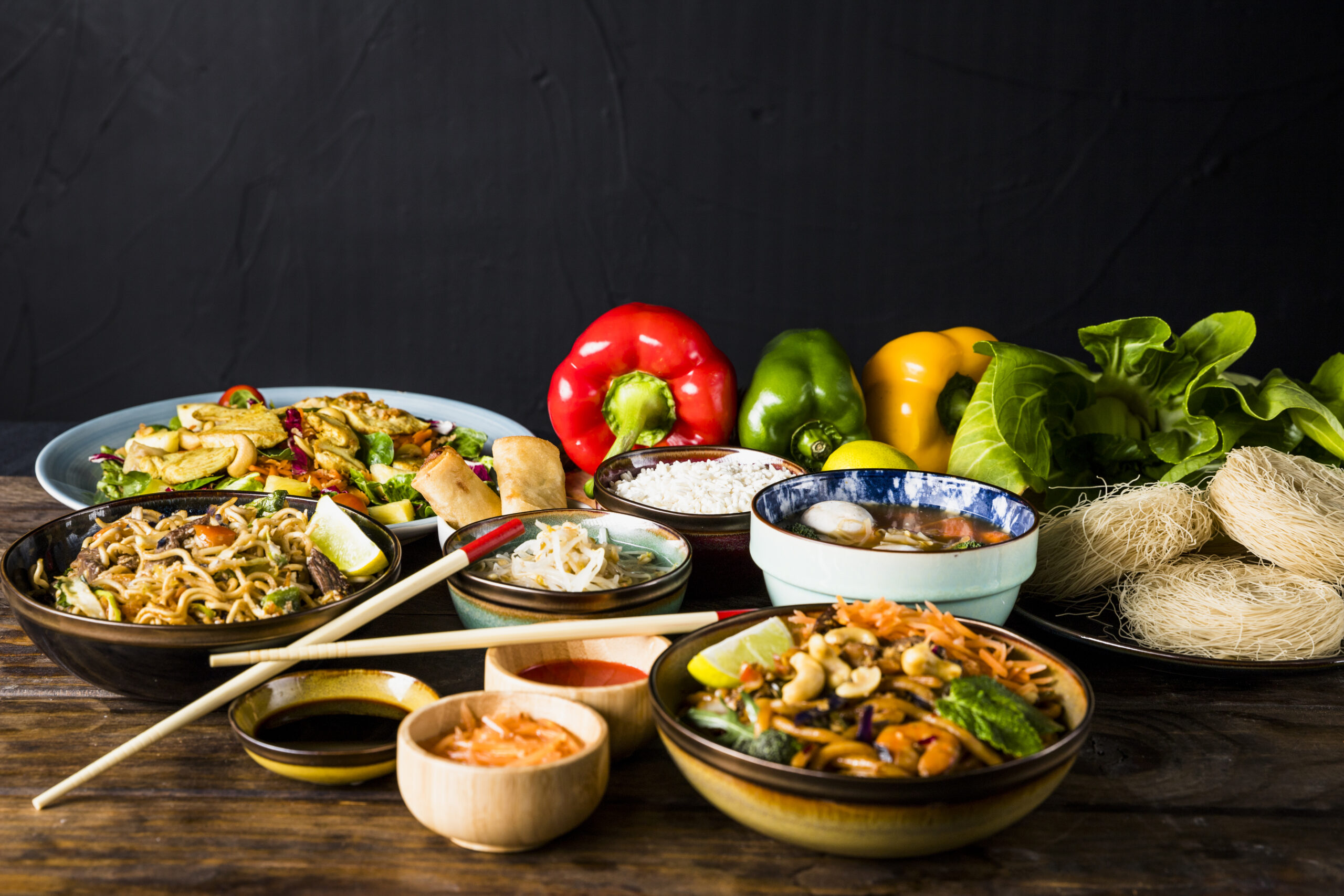🌟 1. Introduction to Chinese Cuisine
-
One of the world’s oldest and most diverse culinary traditions.
-
Rich cultural history that dates back thousands of years.
-
Known for balance of taste, color, aroma, and nutrition.
🍜 2. Regional Diversity in Chinese Food
-
Cantonese (Guangdong) – Mild, fresh flavors; dim sum and stir-fries.
-
Sichuan (Szechuan) – Bold, spicy dishes using Sichuan peppercorns.
-
Shandong – Known for seafood and clear, savory broths.
-
Jiangsu – Elegant dishes with artistic presentation.
-
Fujian – Soups and stews with strong umami flavors.
-
Hunan – Even spicier than Sichuan; rich and aromatic.
-
Anhui & Zhejiang – Earthy, local ingredients and braising techniques.
🍚 3. Common Ingredients
-
Rice, noodles, tofu, soy sauce, ginger, garlic, spring onions.
-
Proteins: pork, duck, chicken, seafood.
-
Vegetables: bok choy, mushrooms, lotus root, bamboo shoots.
🍢 4. Cooking Techniques
-
-
Stir-frying (quick and healthy).
-
Steaming (preserves nutrients).
-
Deep-frying, braising, boiling, and roasting.
-
-
Wok as a central cooking tool.
🥟 5. Famous Dishes
-
-
Peking Duck – Crispy skin and thin pancakes.
-
Kung Pao Chicken – Spicy, sweet, and nutty.
-
Sweet and Sour Pork
-
Mapo Tofu
-
Hot Pot – Communal, interactive dining.
-
-
Dim Sum – Small, bite-sized portions for sharing.
🫖 6. Chinese Tea Culture
-
Tea is more than a drink – it’s a cultural experience.
-
Types: green tea, oolong, pu-erh, jasmine.
-
Often served with meals or during special occasions.
🎊 7. Food and Festivals
-
Chinese New Year: Dumplings, fish, sticky rice cake (nian gao).
-
Mid-Autumn Festival: Mooncakes.
-
Symbolic meanings: e.g., noodles for longevity, fish for prosperity.
🌍 8. Global Influence
-
Chinese cuisine has spread worldwide and adapted to local tastes.
-
Chinese-American, Chinese-Indian, and Chinese-Thai cuisines show fusion styles.
-
Popular everywhere due to variety, taste, and affordability.
🧠 9. Philosophical Elements
-
Yin and Yang balance – Cold vs hot foods for health.
-
Five flavors – Sweet, sour, bitter, salty, and umami must be balanced.
-
Focus on harmony and wellness.
🎨 10. Conclusion
-
Chinese cuisine is not just food, but a deep reflection of culture, philosophy, and history.
-
A journey into Chinese cuisine is a journey into the heart of China itself.



